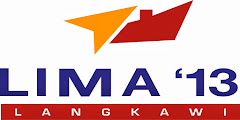 Igla SA-18 (photo : PVOGuns)
Igla SA-18 (photo : PVOGuns)Development
Known by the Russian designation, Igla (Russian for 'needle'), the NATO-designated SA-18 'Grouse' (9K38) was developed by the Konstruktorskoye Byuro Mashinostroenia (KBM) and is produced by the V A Degtyarev Plant in the Vladimir region of the Russian Federation. This is a third-generation, man-portable, surface-to-air missile system and it is given the Russian industrial index number 9K38, for the complete system. It entered service in 1983. Development began in 1971 but it was preceded into service by the simplified export variant Igla-1. This happened because problems were encountered with development of several of the Igla's major components.
The Igla is a further improvement to the KBM/Degtyarev family of low-altitude MANPADs and incorporates technology innovations from the Igla-1 and Strela-3 systems. It features a dual-channel IR seeker and highly sophisticated FM-tracking logic target discrimination selection unit to defeat sophisticated (pyrotechnically, blinking and modulated) IR decoys. The seeker is believed to operate in the 1.5 to 2.5 and 3.0 to 5.0 µm infrared waveband regions. Commonality remains with the Igla-1 in terms of the rocket motor body, on board and ground power supply units and the equipment used in servicing the missile systems and personnel training. The latter can also be used for the Igla-1 system.
A contract has been agreed with Vietnam for the local production of the Igla missile system. Initially the Russian Federation will supply components for assembly in Vietnam. However, it is understood that local production will continue there after. This contract has been brokered by the Leningrad Optical Mechanical Association.
(Jane’s)










Tidak ada komentar:
Posting Komentar